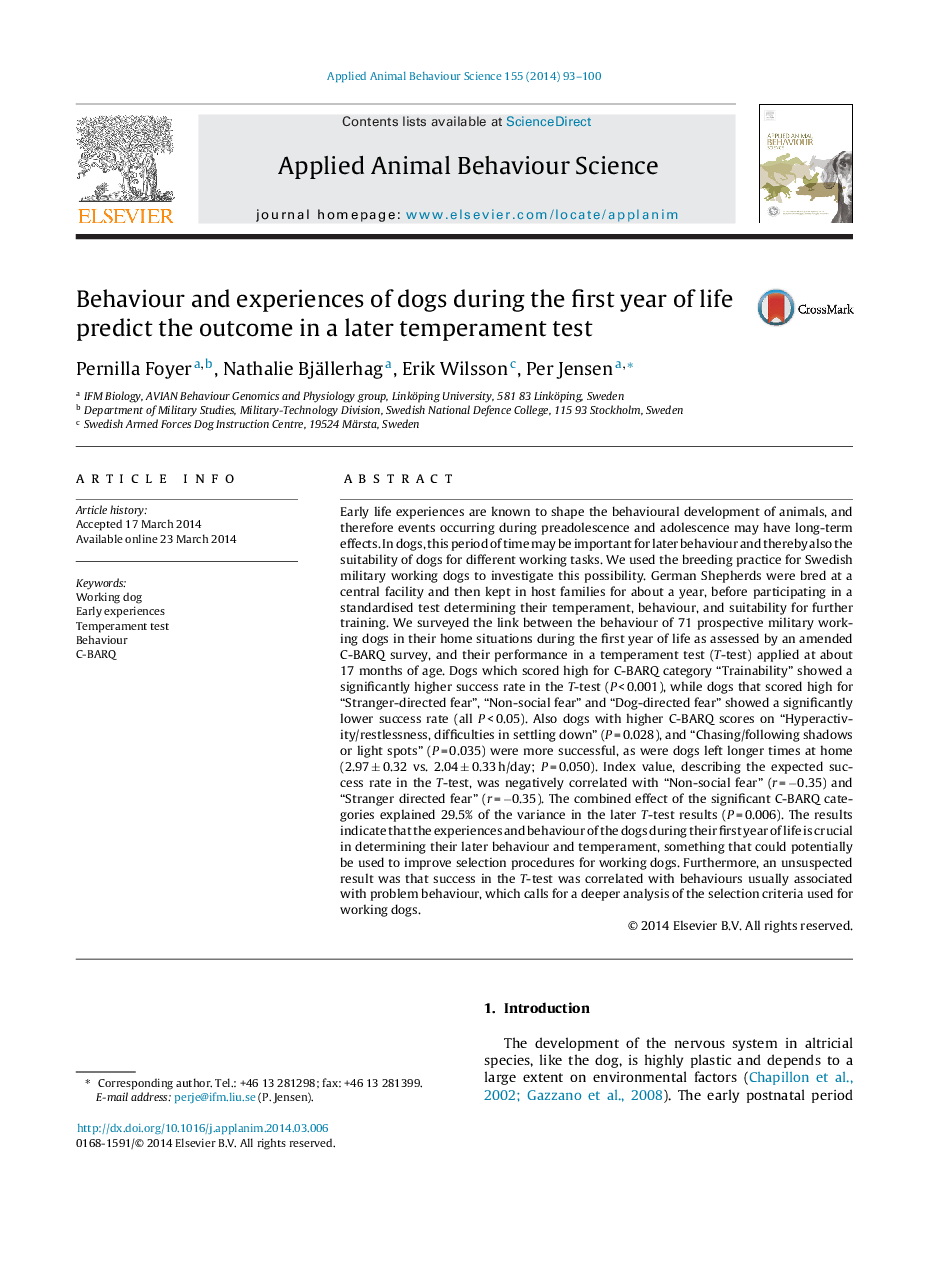| کد مقاله | کد نشریه | سال انتشار | مقاله انگلیسی | نسخه تمام متن |
|---|---|---|---|---|
| 4522606 | 1625351 | 2014 | 8 صفحه PDF | دانلود رایگان |
• Many prospective army dogs fail the suitability test.
• We compared owner judgements of early behaviour with test success.
• Trainable dogs with low fear as young were more successful.
• Dogs with hyperactivity problems as young rated better at test.
• Owner ratings explained about 30% of variation in success.
Early life experiences are known to shape the behavioural development of animals, and therefore events occurring during preadolescence and adolescence may have long-term effects. In dogs, this period of time may be important for later behaviour and thereby also the suitability of dogs for different working tasks. We used the breeding practice for Swedish military working dogs to investigate this possibility. German Shepherds were bred at a central facility and then kept in host families for about a year, before participating in a standardised test determining their temperament, behaviour, and suitability for further training. We surveyed the link between the behaviour of 71 prospective military working dogs in their home situations during the first year of life as assessed by an amended C-BARQ survey, and their performance in a temperament test (T-test) applied at about 17 months of age. Dogs which scored high for C-BARQ category “Trainability” showed a significantly higher success rate in the T-test (P < 0.001), while dogs that scored high for “Stranger-directed fear”, “Non-social fear” and “Dog-directed fear” showed a significantly lower success rate (all P < 0.05). Also dogs with higher C-BARQ scores on “Hyperactivity/restlessness, difficulties in settling down” (P = 0.028), and “Chasing/following shadows or light spots” (P = 0.035) were more successful, as were dogs left longer times at home (2.97 ± 0.32 vs. 2.04 ± 0.33 h/day; P = 0.050). Index value, describing the expected success rate in the T-test, was negatively correlated with “Non-social fear” (r = −0.35) and “Stranger directed fear” (r = −0.35). The combined effect of the significant C-BARQ categories explained 29.5% of the variance in the later T-test results (P = 0.006). The results indicate that the experiences and behaviour of the dogs during their first year of life is crucial in determining their later behaviour and temperament, something that could potentially be used to improve selection procedures for working dogs. Furthermore, an unsuspected result was that success in the T-test was correlated with behaviours usually associated with problem behaviour, which calls for a deeper analysis of the selection criteria used for working dogs.
Journal: Applied Animal Behaviour Science - Volume 155, June 2014, Pages 93–100
